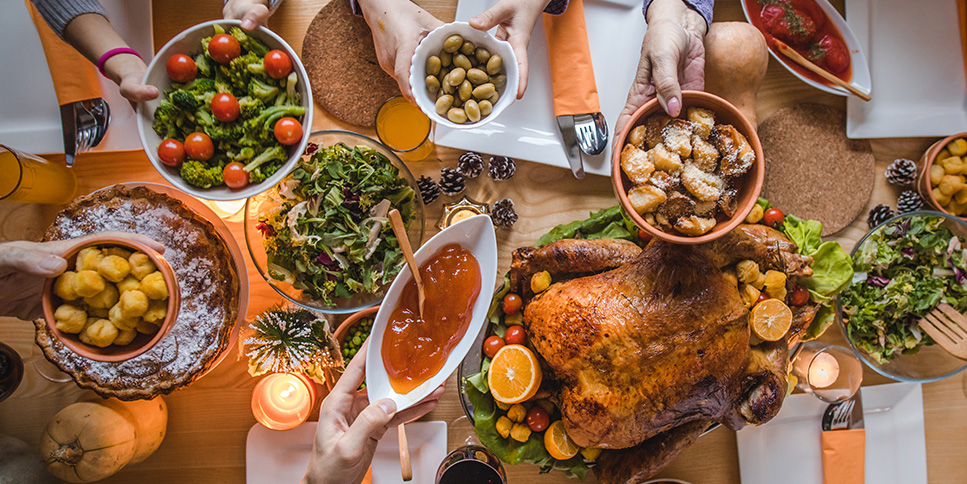Food Cravings. We’ve all had our fair share. 50% of people report experiencing cravings on a regular basis and that’s really no surprise when you consider all the factors that contribute to food cravings.
Food cravings are a temptation to contend with—but there are things you can do to help resist the urge for junk food.
First, let’s look at how cravings work from a neurological standpoint. Food cravings go far beyond willpower. Our brains are actually hardwired to release feel-good hormones even just thinking about eating something indulgent.
According to Harvard, when we eat foods that are hyperpalatable—meaning they are sweet, salty or rich—the reward region in the brain called the hypothalamus lights up like a Christmas tree and stimulates the release of hunger hormones as well as the “feel-good” hormone dopamine and this combined release of hormones creates the perfect storm for food cravings.
The more you give in to your favorite junk foods, the more you stimulate the reward region in your brain and scientists credit this pattern loop to cravings, addictive food patterns and emotional eating.
With Thanksgiving around the corner, temptation will abound—and between the fatigue of travel and the stress of everyone under one roof—it may lead to over consuming comfort foods. The following strategies can help. Keep them in your back pocket and use them to manage food cravings this Thanksgiving, and over the holidays ahead.
4 Ways to Manage Food Cravings This Thanksgiving:
1. Get enough good calories—and stay hydrated
If you want to keep food cravings at bay, it’s just as important to get enough nutrient-dense calories as it is to not exceed your upper calorie limit.
Studies show that people that severely restrict calories have more food cravings, therefore it’s important to calculate how much you need—right down to your macronutrient mix—and aim to eat within it each day. For help calculating your daily need based on your goals, read this.
You may have also heard that thirst and dehydration can both be confused for hunger—and researchers have found it to be true. In clinical studies, 37% of people mistake thirst for hunger thanks to the empty stomach, gurgling and light headedness that can also accompany dehydration—so be sure you’re getting enough water each day. The Mayo Clinic says the easiest rule of thumb to remember is the 8×8 rule: 8 8-ounce glasses of water each day.
2. Delay and distract
Two proven methods for sidestepping food cravings are to put them off and distract yourself in the process. Harvard says that food cravings could naturally disappear in just five to seven minutes if you put it off just a few minutes at a time while doing something else.
Try replacing tempting foods with other dopamine-releasing activities like taking a walk, watching funny memes, playing with the family pet or listening to music—all things that can be equally enjoyable to do with family members over Thanksgiving.
3. Plan your meals around Thanksgiving thoughtfully
Don’t get us wrong, just because you’re on a weight-loss journey or watching your watch doesn’t mean you can’t indulge a little over the holidays. If you don’t allow yourself a little bit of your favorite Thanksgiving trimmings, you’ll most likely cave and overindulge later on.
Decide which gathering you’re going to allow for indulgences and then plan the rest of your meals that weekend or throughout the holiday week accordingly so that you’re balancing your meals mindfully. In the days surrounding the big meal, focus on plenty of fresh salads, green vegetables, lean proteins and lots of water. Limit sugar, simple carbs, alcohol and unnecessary extras like sauces and condiments in the meals surrounding turkey dinner so that you don’t totally fall off the health bandwagon.
4. Practice mindful eating
- This one should be a no-brainer at Thanksgiving: Express gratitude for the food you eat
- While eating, think of how your food was grown, harvested and prepared in order to get to your plate—imagine your host thoughtfully preparing each dish throughout the day
- Despite many conversations happening at once, try to take note of each bite you take—savoring everything on your plate versus speeding through and going back for seconds
- Take small bites and chew well. Experts say you should chew every bite about 30 times
- Notice how your food looks, tastes and makes you feel while you enjoy it—and afterwards
*The links used in this article are being provided as a convenience and for informational purposes only; they do not constitute an endorsement or an approval by Iovate Health Sciences International Inc. or any of its affiliates (“Iovate”) of any of the products, services or opinions of the corporation or organization or individual. Iovate bears no responsibility for the accuracy, legality or content of the external site or for that of subsequent links. Contact the external site for answers to questions regarding its content.







